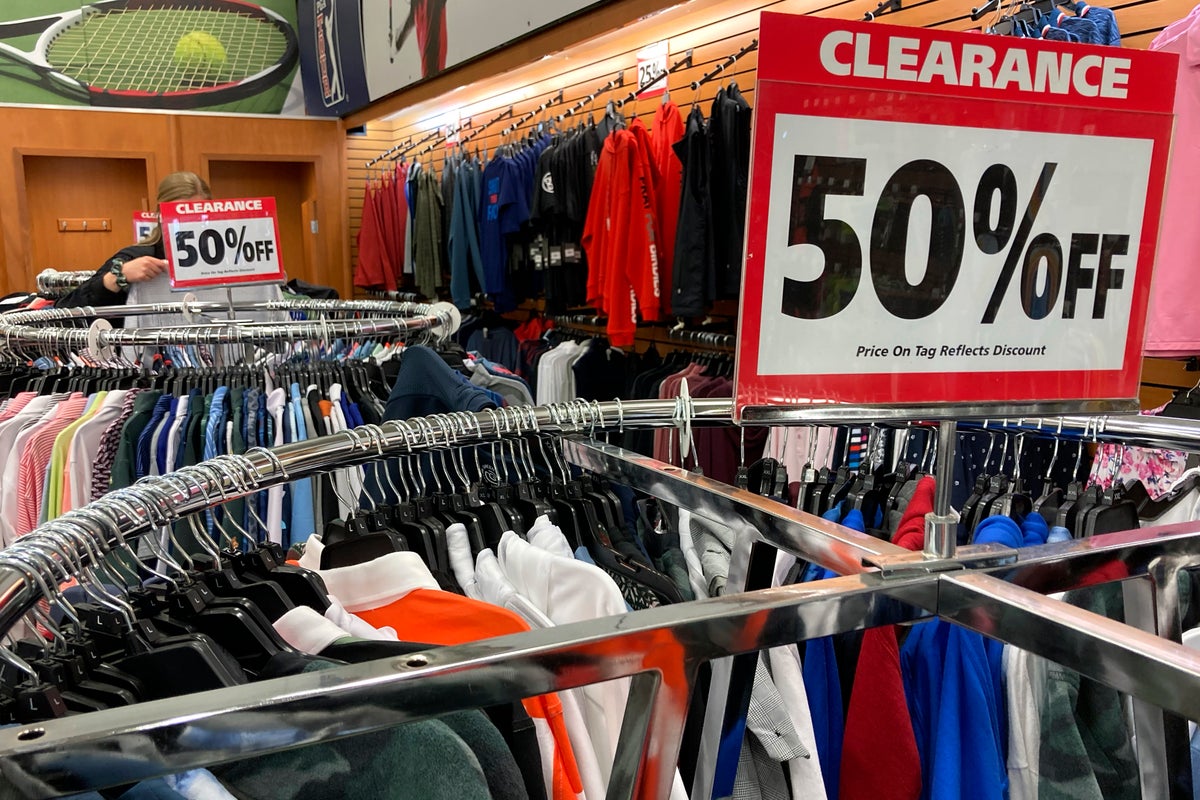
After steadily declining for nearly a year, consumer price data to be released Wednesday will likely show that U.S. inflation remained stubbornly high in April, a sign that it might be entering a newer, stickier phase.
Consumer prices are forecast to have risen 0.4% from March to April, much faster than the 0.1% increase the previous month, according to a survey of economists by the data provider FactSet.
Compared with a year earlier, prices are projected to have jumped 5% in April, the same year-over-year increase as in March. If that forecast proves accurate, it would be the first time that annual inflation didn't fall after nine months of declines.
Pricier gasoline, apartment rents and possibly used cars are among the items that might have accelerated inflation last month. The cost of airline fares and hotel rooms, by contrast, are expected to have eased after months of increases.
For more than two years, high inflation has been a significant burden for America's consumers, an ongoing threat to the economy and a frustrating challenge for the Federal Reserve. Yet now, new problems are emerging.
The Fed has raised its key interest rate by a substantial 5 percentage points since March 2022 to try to drive inflation back down to its 2% target. Besides making borrowing far more expensive for consumers and businesses, those higher rates have contributed to the collapse of three large banks in the past two months and to a likely pullback in bank lending. The result could be a further weakening of the economy.
Even more ominously, the government's debt ceiling may be breached by early June, and Republicans in Congress are refusing to raise the cap unless President Joe Biden and congressional Democrats agree to sharp spending cuts. If the debt ceiling isn't raised in time, the nation would default on its debt, a scenario that could ignite a global economic crisis.
Inflation has slowed sharply since peaking at a 9.1% annual rate last June. Still, many economists say the decline so far has likely been the easy phase. The supply chain snarls that left many grocery shelves bare and delayed the delivery of furniture, cars and electronics have been resolved. Gas prices have also dropped steadily after having spiked in the wake of Russia's invasion of Ukraine, though they rose again in April after OPEC agreed to reduce oil output.
Excluding volatile food and energy costs, so-called core inflation is also expected to have stayed high last month, with economists envisioning a 0.3% increase from March to April and 5.4% from a year earlier.
The Fed and many economists closely monitor core prices, which are regarded as a better measure of longer-term inflation trends. One major driver of core inflation — apartment costs and other housing expenses — surged 8.2% in March from 12 months earlier. Most economists expect apartment rents to grow much more slowly in coming months, helping to slow inflation, as more new apartment buildings are completed.
Chair Jerome Powell and other Fed officials are paying particular attention to the cost of services, excluding energy and housing. They consider rising services prices to be particularly sticky because they're heavily fueled by wage increases.
Prices for restaurant meals, airline tickets and hotel rooms have risen steadily as companies have had to raise pay in those industries to find and retain workers. Restaurant prices jumped 8.8% in March from a year ago.
"The most persistent area of inflation is in core services excluding housing, which has been running around 4.5% since last August," John Williams, president of the Federal Reserve Bank of New York, said Tuesday. Williams, who is close to Powell, is an influential voice in Fed policy.
"This is driven by a continued imbalance in overall supply and demand, and it will take the longest to bring down," Williams said.
When they met last week, the Fed's policymakers agreed to raise their benchmark rate by a quarter-point, the 10th straight increase, to about 5.1% — the highest level in 16 years. The Fed's rate hikes, which are intended to cool spending, growth and inflation, have led to higher costs for mortgages, auto loans and credit card and business borrowing.
Most economists think the rate hikes will, over time, have their intended effect. Yet most also worry that the hikes will weaken the economy so much as to tip it into a recession sometime this year.
At last week's meeting, the Fed signaled that it may now pause its rate hikes and take time to monitor the effects of its policy actions on the economy, which might take many more months to become fully evident.







